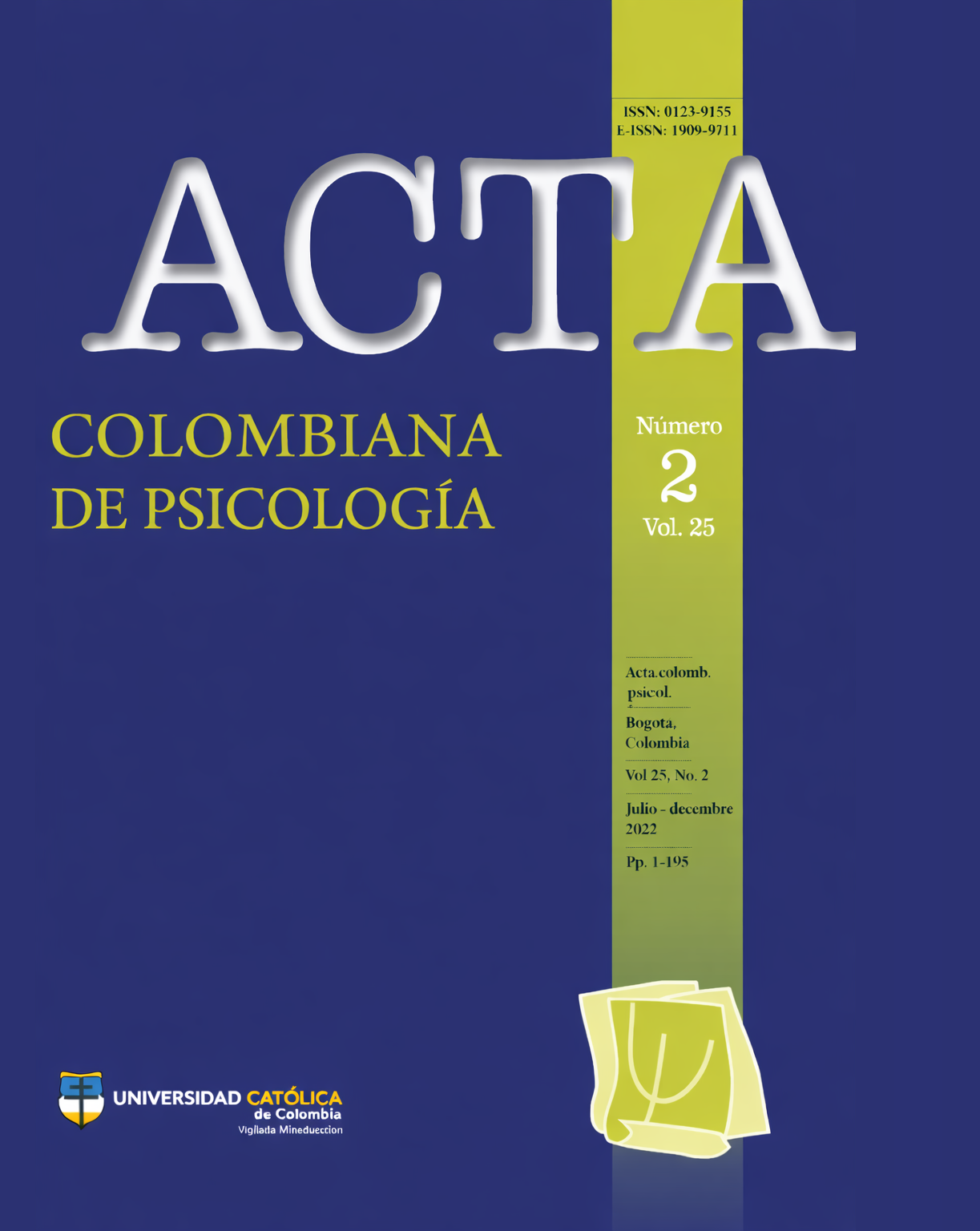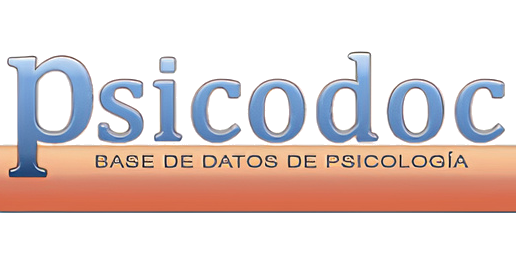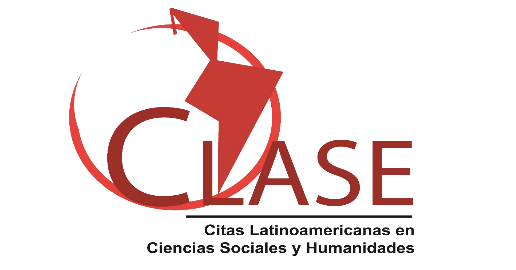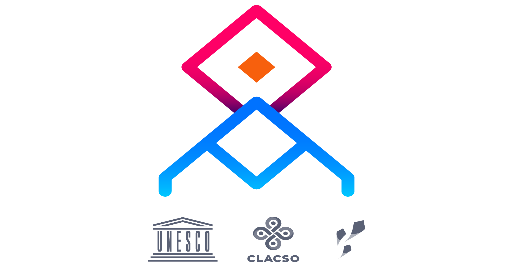
Esta obra está bajo una licencia internacional Creative Commons Atribución-NoComercial-CompartirIgual 4.0.
Los autores que publiquen en esta Revista aceptan las siguientes condiciones:
Acta Colombiana de Psicología se guía por las normas internacionales sobre propiedad intelectual y derechos de autor, y de manera particular el artículo 58 de la Constitución Política de Colombia, la Ley 23 de 1982 y el Acuerdo 172 del 30 de Septiembre de 2010 (Reglamento de propiedad intelectual de la Universidad Católica de Colombia)
Los autores conservan los derechos de autor y ceden a la Revista el derecho de la primera publicación, con el trabajo registrado con la Este obra está bajo una licencia de Creative Commons Reconocimiento-NoComercial-CompartirIgual 4.0 Internacional, que permite a terceros utilizar lo publicado siempre que mencionen la autoría del trabajo y a la primera publicación en esta Revista.
Resumen
En este trabajo se indagó, desde una aproximación psicológica no representacional, y a partir de dos experimentos, por el efecto de la estructura textual en la comprensión y abstracción de textos. En el primer experimento, quince estudiantes universitarios leyeron tres textos históricos distintos con una de tres estructuras —secuencial, jerárquica o circunstancial—, y se midió si interpretaron, subinterpretaron o sobreinterpretaron los textos en tres pruebas propias de cada estructura, y si realizaban la abstracción de un hecho común a los tres textos. En el segundo, se replicó sistemáticamente el primer experimento, pero con otros quince estudiantes, que se asignaron según su conocimiento conceptual del dominio histórico-político. Los resultados sugieren mayor subinterpretación con la estructura secuencial, y mayor sobreinterpretación con la jerárquica y la circunstancial; el conocimiento conceptual explicó los hallazgos mejor que la estructura textual, pero no dio cuenta de toda la variabilidad. Al final se discuten los resultados en términos de la mediación lingüística como una competencia subordinante tanto del conocimiento conceptual como de la estructura textual. Asimismo, se resaltan las ventajas del registro evolutivo de la comprensión de cada lector, se anticipan algunas fuentes de control adicional para futuros estudios, y se culmina proponiendo algunas implicaciones educativas de los hallazgos.

Citas
Achugar, M., & Schleppegrell, M. J. (2005). Beyond connectors: The construction of cause in history textbooks. Linguistics and Education, 16(3), 298-318. https://doi. org/10.1016/j.linged.2006.02.003
Amiri, F., Zainal, Z., & Abdul, A. (2012). Effects of text structure on the Iranian students` reading comprehension reading. Procedia: Social and Behavioral Sciences, 66, 402-409. https://doi.org/10.1016/j.sbspro.2012.11.283
Armand, F. (2001). Learning from expository texts: Effects of the interaction of prior knowledge and text structure on responses to different questions types. European Journal of Psychology of Education, 16(1), 67-86. https://doi.org/10.1007/BF03172995
Barton, K. C., & Levstik, L. S. (2004). Narrative structure and history education. En K. C. Barton & L. S. Levstik (Eds.), Teaching history for the common good (pp. 129- 149). Lawrence Erlbaum.
Bohn-Gettler, C. M., & Kendeou, P. (2014). The interplay of reader goals, working memory, and text structure during reading. Contemporary Educational Psychology, 39(3), 206-219. https://doi.org/10.1016/j. cedpsych.2014.05.003
Carretero, M., & Limón, M. (1993). Aportaciones de la psicología cognitiva y de la instrucción a la enseñanza de la historia y las ciencias sociales. Journal for the Study of Education and Development, 16(62-63), 153-167. https://doi.org/10.1080/02103702.1993.10822378
Carretero, M., & López, C. (2011). Estudios sobre el aprendizaje y la enseñanza de la historia: Implicaciones para el desarrollo de la alfabetización histórica. Ciências & Letras, 49, 139-155. https://docplayer.es/90902005-Estudios-sobre-el-aprendizaje-y-la-ensenanza-de-la-his toria-implicaciones-para-el-desarrollo-de-la-alfabetiza cion-historica.html
Carretero, M., Rosa, A., & González, M. F. (2006). Introducción. Enseñar historia en tiempos de memoria. En M. Carretero, A. Rosa & M. F. González (Comps.), Enseñanza de la historia y memoria colectiva (pp. 11- 36). Paidós.
Castro, L. (1972). Diseños experimentales sin estadística. Trillas. Cercadillo, L., Chapman, A., & Lee, P. (2017). Organizing the past: historical accounts, significance and unknown ontologies. En M. Carretero, S. Berger & M. Grever (Eds.), Palgrave Handbook of Research in Historical Culture and Education (pp. 529-552). Palgrave MacMillan.
De la Sancha, O., & Pérez-Almonacid, R. (2017). Competencias y habilidades: implicaciones de su naturaleza disposicional. En J. J. Irigoyen, K. F. Acuña, & M. Y. Jiménez (Coords.), Aportes conceptuales y derivaciones tecnológicas en psicología y educación. (pp.43-56).
Qartuppi. Dymock, S. (2005). Teaching expository text structure awareness. The Reading Teacher, 59(2), 177-181. https://doi. org/10.1598/RT.59.2.7
Fincher-Kiefer, R. (1992). The role of prior knowledge in inferential processing. Journal of Research in Reading, 15(1), 12-27. https://doi.org/10.1111/j.1467-9817.1992. tb00018.x
Fustes, M., & Fernández, M. (2006). El discurso causal en la enseñanza de la historia. Campo Abierto, 25(1), 99-101. http://hdl.handle.net/11162/28151 Johnston, P. (1984). Prior knowledge and reading comprehension Test Bias. Reading Research Quarterly, 19(2), 219-239. https://doi.org/10.2307/747364
Judd, C. M., & Kenny, D. (1981). Estimating the effects of social interventions. Cambridge University Press.
Kendeou, P., & van den Broek, P. (2007). The effects of prior knowledge and text structure on comprehension processes during reading of scientific texts. Memory & Cognition, 35(7), 1567-1577. https://doi.org/10.3758/ BF03193491
Khoo, Ch., Chan, S., & Niu, Y. (2002). The many facets of cause-effect relation. En R. Green, C. A. Bean, & S. H. Myaeng (Eds.), The semantics of relationships: An interdisciplinary perspective (pp. 51-70).
Kluwer. Kintsch, W. (1998). Comprehension. A paradigm for cognition. Cambridge University Press.
Koban Koç, D. (2016). The role of gender in reading comprehension: An analysis of college-level EFL students’ comprehension of different genres. International Online Journal of Education and Teaching (IOJET), 3(3). 218-227. http://iojet.org/index.php/IOJET/article/ view/142/137
Koh, M. Y. (1985). The role of prior knowledge in reading comprehension. Reading in a Foreign Language, 3(1), 375-380. https://scholarspace.manoa.hawaii.edu/bitstre am/10125/66995/3_1_10125_66995_rfl31yin.pdf
Landis J. R., & Koch G. G. (1977). The measurement of observer agreement for categorical data. Biometrics, 33(1), 159-174. https://doi.org/10.2307/2529310
León, J. A., & Carretero, M. (1995). Intervention in comprehension and memory strategies: Knowledge and use of text structure. Learning and Instruction, 5(3), 203-220. https://doi.org/10.1016/0959-4752(95)00011-Q
Linderholm, T., Everson, M. G., van den Broek, P., Mischinski, M., Crittenden, A., & Samuels, J. (2000). Effects of causal text revisions on more- and less-skilled readers’ comprehension of easy and difficult texts. Cognition and Instruction, 18(4), 525-556. https://doi. org/10.1207/S1532690XCI1804_4
McNamara, D. S. (2001). Reading both high-coherence and low-coherence texts: Effects of text sequence and prior knowledge. Canadian Journal of Experimental Psychology, 55(1), 51-62. https://doi.org/10.1037/ h0087352
McNamara, D. S. (2004). Aprender del texto: Efectos de la estructura textual y las estrategias del lector. Revista Signos, 37(55), 19-30. http://dx.doi.org/10.4067/ S0718-09342004005500002
McNamara, D.S., & Kintsch, W. (1996). Learning from texts: effects of prior knowledge and text coherence. Discourse Processes, 22(3), 247-288. https://doi. org/10.1080/01638539609544975
Meyer, B. J. F. (1984). Text dimensions and cognitive processing. En H. Mandl, N. Stein & T. Trabasso (Eds.), Learning and comprehension of text (pp. 3-52). Lawrence Erlbaum Associates.
Meyer, B. J. F., & Ray, M. N. (2011). Structure strategy interventions: Increasing reading comprehension of expository text. International Electronic Journal of Elementary Education, 4(1), 127-152. https://files.eric. ed.gov/fulltext/EJ1070453.pdf
Montanero, M., & Lucero, M. (2012). Rhetorical structure and graphic organizers: Effects on learning from a history text. International Journal of Instruction, 5(2), 21-40. https://dergipark.org.tr/en/download/article-file/59737
Oakhill, J. (1993). Children´s difficulties in reading comprehension. Educational Psychology Review, 5(3), 223-237. https://www.jstor.org/stable/23359245
Ozuru, Y., Dempsey, K., & McNamara, D. S. (2009). Prior knowledge, reading skill, and text cohesion in the comprehension of science texts. Learning and Instruction, 19(3), 228-242. https://doi.org/10.1016/j. learninstruc.2008.04.003
Paxton, R. J. (1999). A deafening silence: history textbooks and the students who read them. Review of Educational Research, 69(3), 315-339. https://doi. org/10.3102/00346543069003315
Pearson, P. D., Hansen, J., & Gordon, C. (1979). The Effect of background knowledge on young children’s comprehension of explicit and implicit information. Journal of Reading Behavior, 11(3), 201-209. https://doi. org/10.1080/10862967909547324
Pérez-Almonacid, R., & Bautista-Castro, L. R. (2021). Ajuste categorial/conceptual: un análisis histórico-conceptual. Acta Comportamentalia, 29(4), 83-113. http://www.revistas.unam.mx/index.php/acom/article/ view/80315/70797
Pérez-Almonacid, R., García-Utrera, L., & Ortíz, D. M. (2015). El estudio psicológico de la comprensión. En M. A. Reyes, G. Mendoza & P. Barrera (Eds.), Algunas aportaciones psicológicas y sociológicas a la educación (vol. 2, pp. 77-101). Nautilum.
Pérez-Almonacid, R., Rangel, M. M., Bautista, L. R., Hernández, J., & Ortíz, D. M. (2014). Aprendizaje y abstracción conceptual. En G. Mendoza, M. A. Reyes & P. Barrera (Eds.), Algunas aportaciones psicológicas y sociológicas a la educación (1.ª ed.). (pp. 59-79). Universidad Autónoma de Chihuahua.
Rodríguez-Moneo, M., & López, C. (2017). Concept acquisition and conceptual change. En M. Carretero, S. Berger & M. Grever (Eds.), Palgrave Handbook of Research in Historical Culture and Education (pp. 469-490). Palgrave MacMillan.
Ryle, G. (1949). The concept of mind. Barnes & Noble.
Schleppegrell, M. J. (2004). The language of schooling: A functional linguistics perspective (1.ª ed.). Lawrence
Erlbaum. Schnotz, W. (1982). How do different readers learn with different text organizations? En A. Flammer & W. Kintsch (Eds.), Discourse processing (pp. 87-97). North Holland.
Scruton, R. (2007). The Palgrave Macmillan Dictionary of Political Thought (3.ª ed.). Palgrave MacMillan.
Shanahan, C. (2009). Disciplinary comprehension. En S. E. Israel & G. G. Duffy (Eds.), Handbook of research on reading comprehension (pp. 240-260). Routledge.
Shanahan, T., & Shanahan C. (2008). Teaching disciplinary literacy to adolescents: rethinking content- area literacy. Harvard Educational Review, 78(1), 40-59. https://doi. org/10.17763/haer.78.1.v62444321p602101
Sidman, M. (1960). Tactics of scientific research. Basic Books Szigriszt, F. (1993). Sistemas predictivos de legibilidad del mensaje escrito: fórmula de perspicuidad (Tesis doctoral). Universidad Complutense de Madrid. http://webs. ucm.es/BUCM/tesis//19911996/S/3/S3019601.pdf
Thanyapa, I., & Currie, M.G. (2014). The number of options in multiple choice ítems in language tests: Does it make any difference? Evidence from Thailand. Language Testing in Asia, 4(8), 1-21. https://doi.org/10.1186/ s40468-014-0008-7
Van Dijk, T. A., & Kintsch, W. (1983). Strategies of discourse comprehension. Academic Press. Voss, J. F., & Silfies, L. N. (1996). Learning from history text: The interaction of knowledge and comprehension skill with text structure. Cognition and Instruction, 14(1), 45-68. https://doi.org/10.1207/s1532690xci1401_2
Voss, J. F., & Wiley, J. (1997). Conceptual understanding in history. European Journal of Psychology of Education, 12, 147-158. https://doi.org/10.1007/BF03173082
Voss, J. F., & Wiley, J. (2006). Expertise in History. En K. A. Ericsson, N. Charness, P. J. Feltovich & R. R. Hoffman (Eds.), The Cambridge handbook of expertise and expert performance (1.ª ed.) (pp. 569-584). Cambridge University Press.
William, P. B., & Carnine, D. W. (2014). Relationship between range of examples and of instructions and attention in concept attainment. The Journal of Educational Research, 74(3), 144-148. https://doi.org/10.1080/00220 671.1981.10885300
Williams, J. P. (2005). Instruction in reading comprehension for primary-grade students: a focus on text structure. The Journal of Special Education, 39(1), 6-18. https://files. eric.ed.gov/fulltext/EJ693938.pdf


































